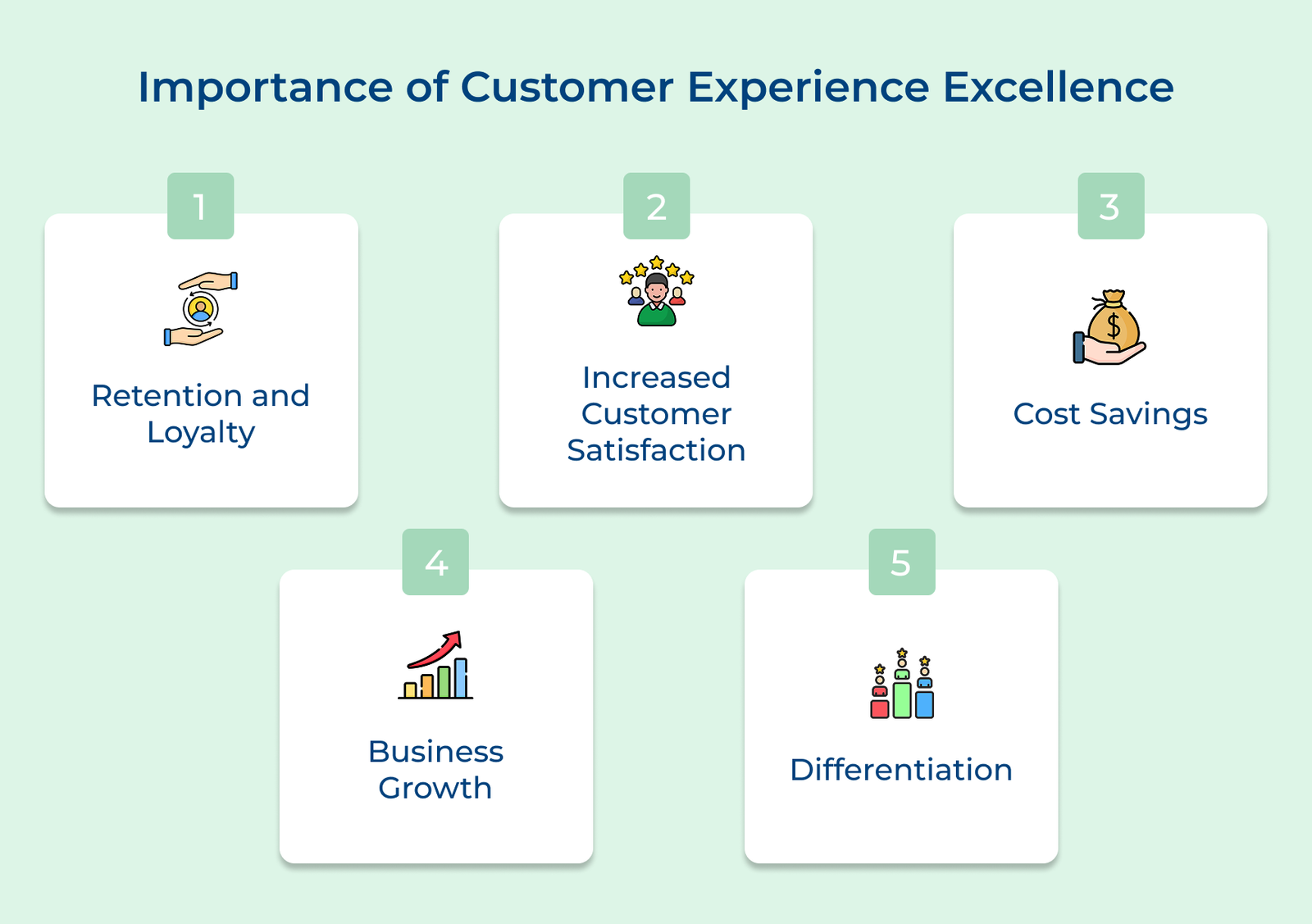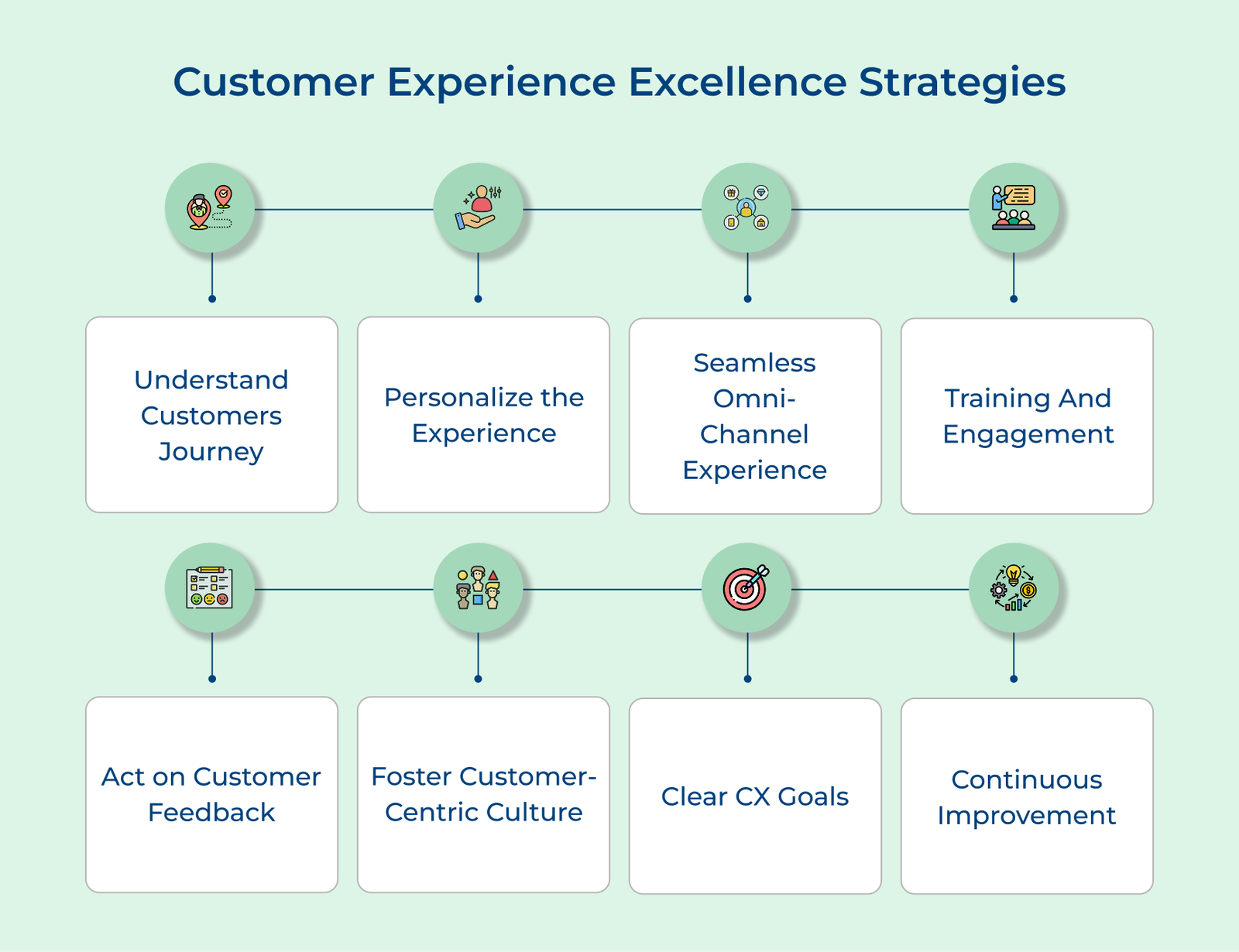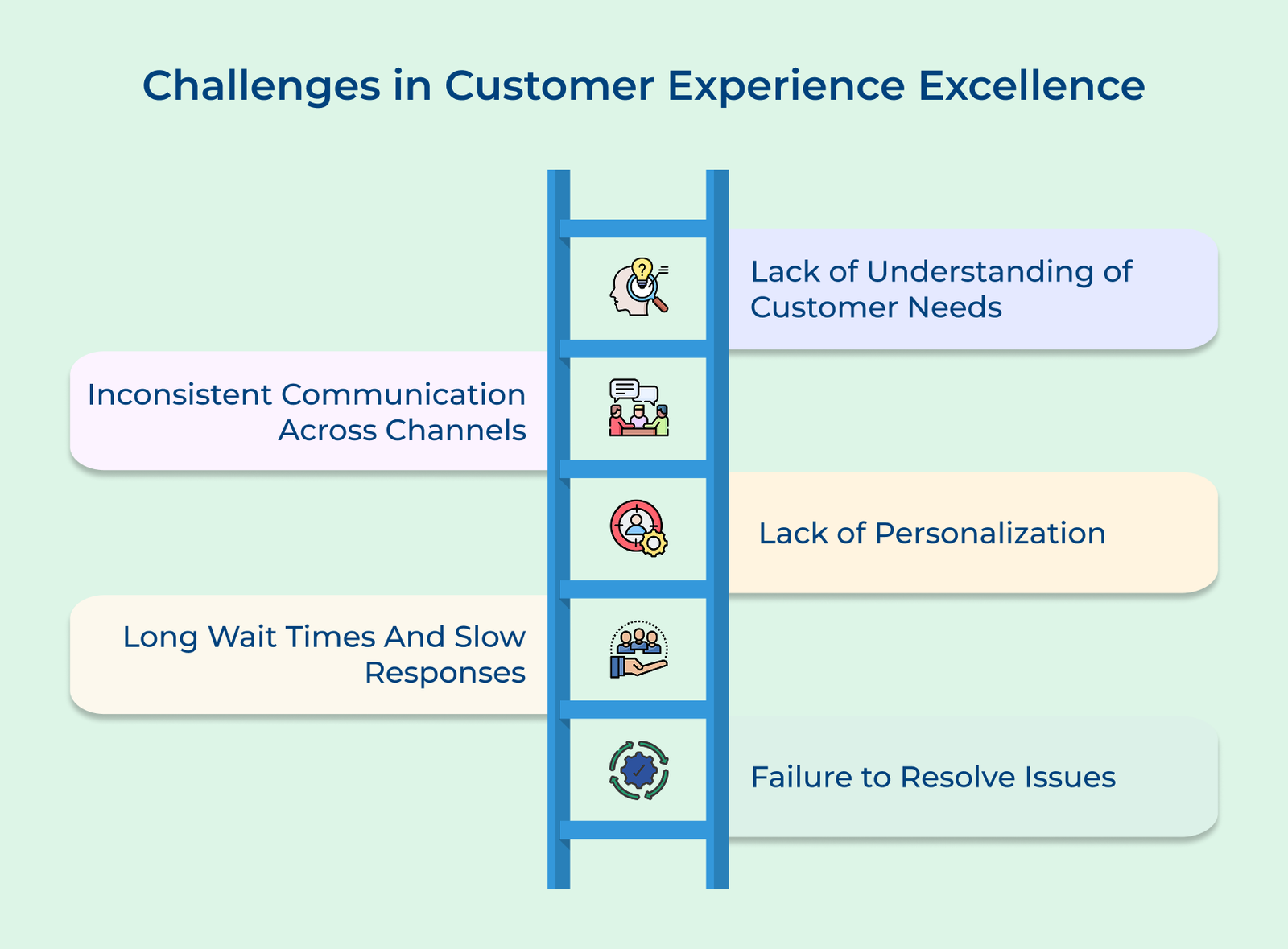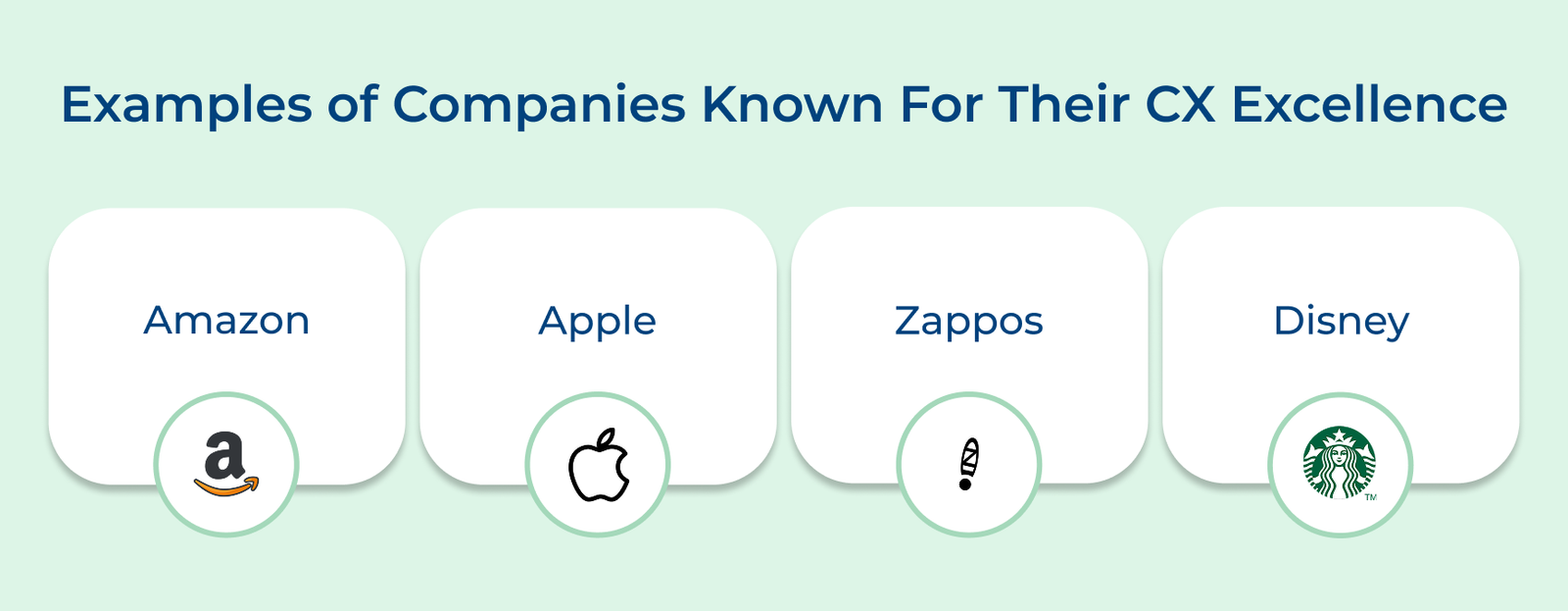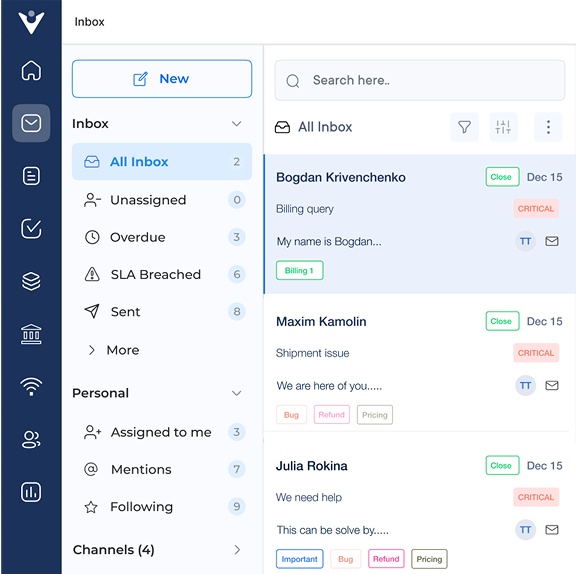1. Understand Your Customer’s Journey
Understanding the customers is key to achieving customer experience (CX) excellence. Taking the time to truly understand the target audience can help to tailor the offerings. The strategy involves gathering data, conducting research and actively engaging with the customers. Businesses can create personalized campaigns, provide relevant offerings and exceptional service by understanding the customers.
Let’s assume that a clothing retailer may use data analytics to identify popular trends among target demographics and adjust their inventory. They may also collect feedback through surveys and social media to understand customer preferences. The user’s shopping experience can also be enhanced through it.
Pro tips:
- Segment the customer base to better target the marketing efforts and personalize the communications.
- Stay up-to-date on industry trends in consumer behavior to anticipate and meet the evolving needs of the customers.
2. Personalize the Experience
Personalizing the customer experience is a crucial strategy for companies looking to achieve customer experience excellence. Companies can enhance stronger connections among their customers by tailoring offerings and interactions to meet their unique needs. One way to personalize the experience is by leveraging data to create customized marketing messages and offers.
A great example of personalized customer experience is Amazon’s recommendation engine. It uses customer data to suggest products that are likely to be of interest to each shopper. The personalized approach has helped Amazon build a loyal customer base and drive revenue growth.
Best practices:
- Analytics: Invest in data analytics tools to gather and analyze customer information effectively
- Monitor and analyze: Evaluate the effectiveness of personalized campaigns to optimize results and improve the experience.
3. Provide Seamless Omni-Channel Experience
Achieving CX excellence is key for any successful business and a strategy that has proven to be effective in providing a seamless omnichannel experience. Customers can interact with a company in a way that is convenient, efficient and personalized. Integrating all channels and touchpoints can help companies create a cohesive experience for their customers.
A great use case for the strategy is a retail company. Customers can browse online, make a purchase in-store and then track their order status through a mobile app. The company can provide a frictionless experience that enhances the customer’s experience by integrating channels.
Best practice:
- Invest in technology that allows for seamless integration and communication between channels.
- Integrating online and offline channels for a unified customer journey
- Enabling smooth transitions between channels based on customer preferences
4 Training and Engagement
Training and engagement are key strategies that can help companies achieve customer experience excellence. Training is essential to ensure that employees have the skills needed to interact with customers. Providing ongoing training can help companies ensure that employees stay up-to-date on industry trends and customer service best practices.
Engagement is equally important as it allows companies to connect with customers on a personal level. Businesses can build strong relationships with their customers by listening to feedback, responding promptly and showing genuine interest in their needs.
Pro tips:
- Develop a comprehensive training program that covers all aspects of customer service and product knowledge.
- Use customer feedback to identify areas for improvement and make necessary adjustments to training.
- Encourage a culture of learning to ensure that employees are always striving to deliver the best possible customer experience.
5. Act on Customer Feedback
Acting on customer feedback is a crucial strategy for helping companies achieve customer experience excellence. It provides valuable insights into what customers like, dislike and what improvements can be made. Acting on the feedback can help companies show their customers that their opinions are valued and that their needs are being taken seriously.
One use case of the strategy is a retail company that regularly surveys customers about their shopping experiences. After receiving feedback about long wait times at the check-out counter, the company implemented a new system that reduced wait times. They will experience an increase in their customer satisfaction and loyalty, leading to a positive impact on sales.
Best practices:
- Feedback collection: Collect feedback through various channels, such as surveys, social media and customer reviews.
- Focus on priority: Prioritize feedback that is actionable and can lead to tangible improvements.
- Communication: Communicate with customers about the changes made based on their feedback to show that their input is valued.
6. Enhance a Customer-Centric Culture
The importance of the strategy cannot be overstated. Prioritizing the needs of customers can help companies build loyalty and drive growth. A customer-centric culture also helps to differentiate a company from its competitors and create a positive brand reputation.
A great use case for implementing a customer-centric culture is Amazon. The e-commerce giant has built its success on a relentless focus on customer satisfaction. The way they care form their customers by offering fast delivery, easy returns and personalized recommendations.
Best practices:
- Empower employees to make decisions that benefit the customer without needing approval from higher-ups.
- Lead by example and ensure that senior leadership is involved in championing a customer-centric mindset throughout the company.
7. Set Clear Customer Experience Goals
Setting clear customer experience (CX) goals is a crucial strategy for companies looking to achieve excellence in customer satisfaction. Clearly defining what they want their customers to experience can help companies align their efforts toward delivering exceptional service.
Companies can tailor their offerings to meet those requirements by understanding their customers’ needs. Amazon is a great example to understand the impact of the strategy. It has established itself as a leader in the e-commerce industry by focusing on providing a seamless experience and excellent service.
Pro tips:
- Conduct regular customer feedback surveys to understand what customers value most.
- Involve all departments in the goal-setting process to ensure alignment and collaboration.
- Monitor key performance indicators related to customer experience to measure progress and make necessary adjustments.
8. Embrace Continuous Improvement
Continuous innovation is a crucial strategy for companies looking to achieve customer experience excellence. The approach involves evolving products, services and processes to meet the needs of customers. Businesses can stay ahead of the curve and create a positive experience for their customers by embracing continuous innovation.
The strategy also enables companies to differentiate themselves from competitors and drive growth. A use case of continuous innovation in action is Apple, known for its innovative products like the iPhone and MacBook. Apple constantly launches new products and updates existing ones to meet customer demands.
Best practices:
- Embracing new technologies and digital transformation to enhance experiences
- Actively seeking customer feedback and insights for continuous improvement
- Adapting to changing customer expectations and market dynamics
Common Challenges in Customer Experience (CX) Excellence
Let us explore the common obstacles businesses face in their quest for customer experience excellence and provide insights on how to overcome them for a truly outstanding customer journey.






